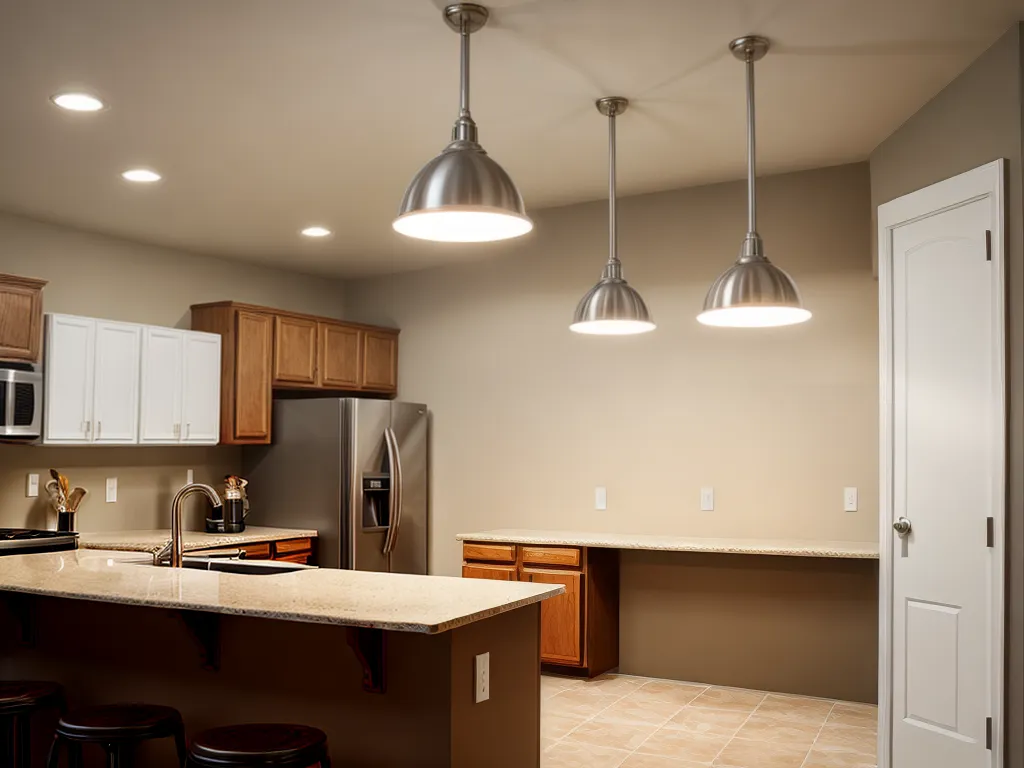
Introduction
Overhead lighting accounts for a significant portion of energy usage in commercial buildings. Upgrading to more efficient overhead lighting can reduce electricity costs and improve lighting quality. However, lighting retrofit projects require careful planning to maximize savings. This article provides tips on minimizing costs for overhead lighting retrofits while achieving energy and maintenance savings.
Assess Current Lighting System
The first step is understanding your existing lighting system. Walk through the space and note:
- Type of fixtures - fluorescent, HID, incandescent, halogen, etc. Older systems like T12 fluorescents are very inefficient.
- Wattages - higher wattages use more electricity.
- Age - older fixtures have lower efficiency and higher failure rates.
- Condition - failing ballasts, yellowed lenses, etc. impact performance.
- Controls - occupancy sensors, daylight harvesting sensors, time clocks, etc.
- Light levels - measure footcandles to ensure appropriate light levels.
This lighting audit identifies upgrade opportunities and establishes a baseline to calculate savings.
Set Lighting Goals
Define the purpose of the retrofit. Common goals include:
- Energy savings - lower energy costs by optimizing lighting efficiency.
- Improved quality - enhance lighting quality and distribution.
- Reduced maintenance - cut maintenance costs by installing longer lasting lamps and ballasts.
- Utility incentives - maximize utility rebate and incentive opportunities.
Setting clear goals ensures the retrofit focuses on key priorities.
Select the Right Fixtures and Lamps
Choosing suitable replacements is crucial for maximizing savings:
- LEDs - extremely energy efficient and long lasting. Ideal for most spaces.
- T8/T5 Fluorescents - offer good efficacy and lamp life at lower cost than LEDs.
- Electronic ballasts - more efficient and reliable than outdated magnetic ballasts.
- Occupancy sensors - turn off fixtures when spaces are unoccupied. Deliver 20-40% lighting savings.
- Daylight harvesting - dims electric light when sufficient daylight is available.
Consult with vendors to pick fixtures and lamps that best align with your goals and budget.
Crunch the Numbers on Savings
Thoroughly analyze potential cost reductions:
- Utility rebates and incentives - many utilities offer substantial incentives for qualifying retrofits. Factor available incentives into the payback calculations.
- Lower wattage - estimate reduced wattage after the retrofit and associated electric bill savings.
- Maintenance savings - account for lower lamp replacement costs with longer lasting lamps.
- Controls savings - estimate energy savings from occupancy sensors and daylight harvesting.
Detailed calculations validate the return on investment for the project.
Develop a Phased Retrofit Plan
Stage the retrofit to smooth out upfront costs:
- Worst offenders first - target the most outdated and inefficient fixtures in phase 1. This provides the quickest payback.
- Group similar areas - install new fixtures in contiguous zones at a time. This streamlines installations.
- Coordinate with planned renovations - integrate lighting upgrades into spaces getting broader upgrades.
A phased rollout maintains light quality while optimizing cash flow.
Manage Installation Carefully
Proper installation ensures new fixtures perform as expected:
- Qualified contractors - be sure contractors follow best practices and standards. Verify licenses, training, and certifications.
- Commissioning - test a sample of new fixtures to confirm proper installation, light levels, and controls functionality.
- Disposal - fluorescent and HID lamps require special disposal to comply with hazardous waste regulations.
- Occupant communication - inform building occupants of the retrofit process, potential disruptions, and timeline.
Careful project management delivers successful lighting upgrades.
Verify Performance Post-Retrofit
Follow up after the retrofit to confirm target savings were achieved:
- Re-measure light levels - use a light meter to spot check light levels in critical areas. Adjust fixtures if needed.
- Functional testing - ensure all sensors, switches, and controls function properly.
- Measurement and verification (M&V) - monitor energy usage for 3-12 months post-retrofit. Compare to pre-retrofit baseline to quantify real-world savings.
- Re-tune - use M&V findings to fine-tune settings and maximize savings.
Proactive verification ensures you capture the expected return on investment.
Conclusion
Overhead lighting upgrades present a major opportunity to cut energy waste and costs. Following best practices for assessment, planning, implementation, and verification leads to successful, cost-effective retrofit projects. Prioritizing the highest impact opportunities first provides quick payback on your lighting investment.